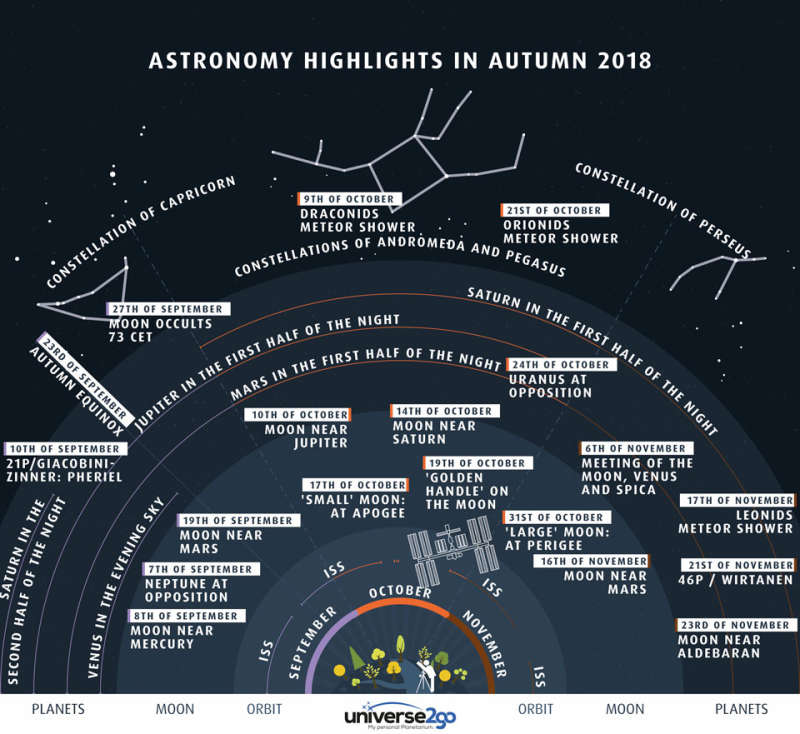
|
Credit & Copyright: Universe2go.com
Explanation:
What can you see in the night sky this season?
The featured graphic gives a few highlights for Earth's northern hemisphere.
Viewed as a clock face centered at the bottom, early (northern) autumn sky events
fan out toward the left, while late autumn events are projected toward the right.
Objects relatively close to
Earth
are illustrated, in general, as nearer to the cartoon figure with the telescope at
the bottom center -- although almost everything pictured can be
seen without a telescope.
As happens during any season, constellations appear the same year to year, and, as usual, the
Leonids
meteor shower will peak in mid-November.
Also as usual, the
International Space Station (ISS)
can be seen, at times, as a bright spot
drifting across the sky after sunset.
Planets visible after sunset this autumn include
Jupiter and Mars, and during late autumn,
Saturn.
|
January February March April May June July August September October November December |
| ||||||||||||||||||||||||||||||||||||||||||||||||
NASA Web Site Statements, Warnings, and Disclaimers
NASA Official: Jay Norris. Specific rights apply.
A service of: LHEA at NASA / GSFC
& Michigan Tech. U.
Based on Astronomy Picture
Of the Day
Publications with keywords: night sky
Publications with words: night sky
See also:
- APOD: 2025 July 1 Á Eye Sky a Dragon
- APOD: 2025 April 23 Á An Almost Everything Sky
- APOD: 2024 September 11 Á A Night Sky over the Tatra Mountains
- APOD: 2023 August 15 Á A Triply Glowing Night Sky over Iceland
- Sunset to Sunrise over the Baltic Sea
- An Artful Sky over Lofoten Islands
- A Furious Sky over Mount Shasta
